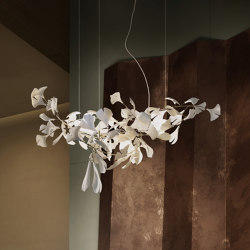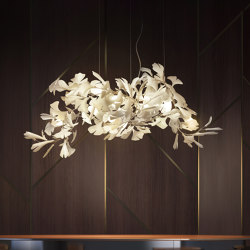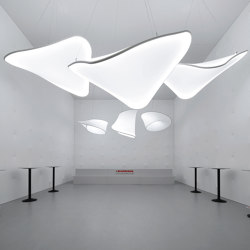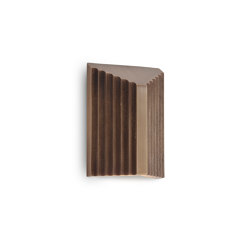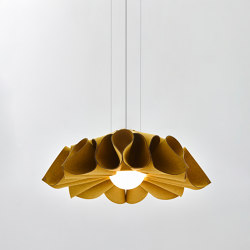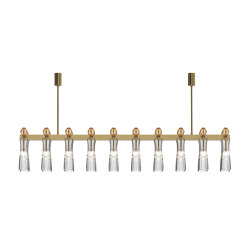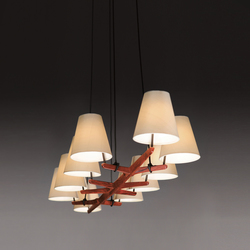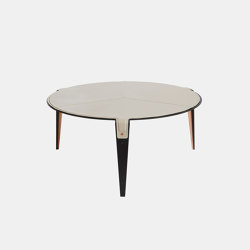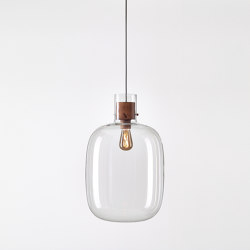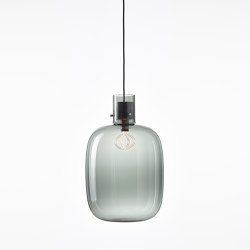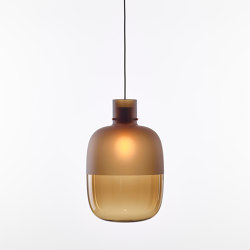About pluma cubic
MORE ABOUT PLUMA CUBIC
From rooster and goose quill feathers, Berlin architect Heike Buchfelder develops minimalistic light- ing objects. 2005 was the starting point of the label now known as pluma cubic. Buchfelder’s lighting ensemble featuring these unorthodox materials became internationally well known at talent forums such as Stylepark, at the Cologne Furniture Exhibition; and Salone Satelilite at Milan’s International Furniture Exhibition. Later in 2005, pluma cubic could be seen with Dutch designer Claudy Jongstra at Moss Gallery in New York. Today her design collection is distributed internationally.
These delicate lighting objects are produced purely by hand in small workshops in Berlin. They are carefully wrought creations, hand made one by one – from the welding of the frame to the attachment of the feathers. Each textile lamp shade is punctured in an uniform pattern, after which 2000-4000 hand-picked feathers are indvidually attached.
Distinct and inarguably corporeal lamps emerge through the uniform arrangement of similar feather types. Through the special method of attaching the feathers to the textile shade, the spectator’s view falls upon the tips of the goose quills, leaving no single feather recognizable as such.
pluma cubic combines natural feathers and clear geometric bodies to create lighting objects, which come across as both opulent and delicate in their materiality. The basic collection consists of goose feather lamps in white, black or gray, as well as four colorful, naturally occurring rooster feather types.
Natural feathers are a surprisingly sturdy material, which, with proper care, can express their beauty over decades. To this day, centuries-old, traditional feather ornaments created by the native tribes of North and South America can still be admired in museums.
Feathers are naturally built to be dirt-repellant. Their surface is smooth, and any dust that lands on the feathers can be easily removed. Consisting of a horn-like material, feathers are extremely durable.
Due to our experience and production facilities directly overseen by us we are able to offer a close collaboration with architects and interior designers and custom tailor design.
Private homes, restaurants, shops, hotels, and public spaces enhance their interiors with pluma cubic feathers. The restaurant of the Ashmolean Museum in Oxford outfitted itself with pluma cubic spheres, and in Lufthansa’s VIP Lounge at Munich Airport, which opened in 2012, air travelers can contemplate the arriving and departing planes under the glow of pluma cubic lamps.
From rooster and goose quill feathers, Berlin architect Heike Buchfelder develops minimalistic light- ing objects. 2005 was the starting point of the label now known as pluma cubic. Buchfelder’s lighting ensemble featuring these unorthodox materials became internationally well known at talent forums such as Stylepark, at the Cologne Furniture Exhibition; and Salone Satelilite at Milan’s International Furniture Exhibition. Later in 2005, pluma cubic could be seen with Dutch designer Claudy Jongstra at Moss Gallery in New York. Today her design collection is distributed internationally.
These delicate lighting objects are produced purely by hand in small workshops in Berlin. They are carefully wrought creations, hand made one by one – from the welding of the frame to the attachment of the feathers. Each textile lamp shade is punctured in an uniform pattern, after which 2000-4000 hand-picked feathers are indvidually attached.
Distinct and inarguably corporeal lamps emerge through the uniform arrangement of similar feather types. Through the special method of attaching the feathers to the textile shade, the spectator’s view falls upon the tips of the goose quills, leaving no single feather recognizable as such.
pluma cubic combines natural feathers and clear geometric bodies to create lighting objects, which come across as both opulent and delicate in their materiality. The basic collection consists of goose feather lamps in white, black or gray, as well as four colorful, naturally occurring rooster feather types.
Natural feathers are a surprisingly sturdy material, which, with proper care, can express their beauty over decades. To this day, centuries-old, traditional feather ornaments created by the native tribes of North and South America can still be admired in museums.
Feathers are naturally built to be dirt-repellant. Their surface is smooth, and any dust that lands on the feathers can be easily removed. Consisting of a horn-like material, feathers are extremely durable.
Due to our experience and production facilities directly overseen by us we are able to offer a close collaboration with architects and interior designers and custom tailor design.
Private homes, restaurants, shops, hotels, and public spaces enhance their interiors with pluma cubic feathers. The restaurant of the Ashmolean Museum in Oxford outfitted itself with pluma cubic spheres, and in Lufthansa’s VIP Lounge at Munich Airport, which opened in 2012, air travelers can contemplate the arriving and departing planes under the glow of pluma cubic lamps.
MORE ABOUT PLUMA CUBIC

